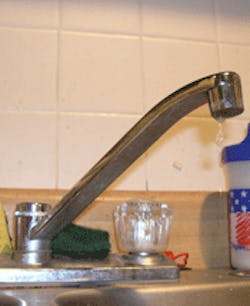NSF Announces New Requirements for Lead to Further Protect Public Health
NSF/ANSI Standard 61 has been updated to further protect the public from exposure to lead.
Changes to the evaluation criteria for lead extraction testing in the NSF/ANSI Standard 61: Drinking Water System Components–Health Effects have been adopted by the NSF Drinking Water Additives Joint Committee. These changes include a reduction in the standard’s total allowable concentration (TAC) of lead from 15 ug/L to 5 ug/L.
NSF/ANSI Standard 61 contains procedures to evaluate products that come into contact with drinking water and to screen out those which might contribute excessive levels of contaminants into drinking water. Most U.S. States and many Canadian Provinces require products used in municipal water distribution systems and building plumbing systems to comply with the requirements of Standard 61.
In addition to reducing the standard’s TAC of lead from 15 ug/L to 5 ug/L, other changes to the lead evaluation criteria in the standard include:
• More than a 50% reduction of the Q Statistic from 11 to 5 for all end-point devices, other than supply stops, flexible plumbing connectors and miscellaneous components.
• More than a 75% reduction of the Q Statistic from 11 to 3 for supply stops, flexible plumbing connectors and miscellaneous components.
• A three-fold reduction of the single product allowable concentration (SPAC) for lead from 1.5 ug/L to 0.5 ug/L.
The standard has an implementation date of July 1, 2012, which was established to allow industry sufficient time to design and produce products from alternate materials to comply with both the revised NSF standard and other physical performance standards. Updates to the standard are contained in Annex F and available at www.nsf.org/info/standard61-FAQ.
For more information, or if you have questions regarding the new requirements, please contact Pete Greiner, Technical Manager, NSF Water Treatment and Distribution Systems Program, at 1.800.NSF.MARK, ext. 5517, 734.769.5517 or [email protected].
Source: NSF
